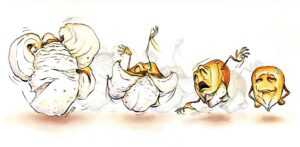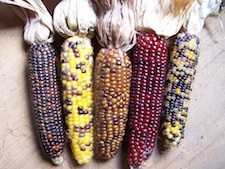
This week begins with a farewell…
After long years of cooperation, the Iza P’ziza Dairy staff has informed us that following intense deliberation, financial considerations have sadly forced them to downsize the dairy’s operation pending its total closure. They will now focus efforts on the activities of the goat herd and the Visitor’s Center. This means that they will be forced to cease working with Chubeza, starting this month.
In the meantime, our search for another dairy with whom to work has been quite unsuccessful. Unfortunately, small, caring goat farms have become a scarcity, unable to survive in the economic reality which gives no support or encouragement to small agricultural enterprises.
If perchance you know of sustainable dairies in our vicinity which produce goat products, we will gratefully follow up on your recommendations.
Let me take this opportunity to thank Alon, Sigal and the entire Iza P’ziza Dairy team for their delightful, professional cooperation over the years.
We will miss you!
CHUBEZA DELIVERY SCHEDULES DURING THE HOLIDAYS:
For the week ending in Rosh Hashana:
- Deliveries as usual – Monday, September 11 and Wednesday, September 13
For the week between Rosh Hashana and Yom Kippur:
- Monday deliveries will be moved to Tuesday, September 19
- Wednesday deliveries as usual on September 20
For the week between Yom Kippur and Sukkot:
- Monday deliveries will be moved to Tuesday, September 26
- Wednesday deliveries as usual on September 27
Over the week of CHOL HAMOED SUKKOT, there will be no packing and no deliveries.
INSTEAD OF COMING TO YOU, WE ARE DELIGHTED TO INVITE YOU TO COME TO CHUBEZA’S OPEN DAY FESTIVITIES IN THE FIELD, SUNDAY, OCTOBER 1ST DURING THE AFTERNOON.
After Simchat Torah, it’s back to Routine!
________________________
In honor of the upcoming New Year, we invite you to add to your boxes the extraordinary Israeli-grown products produced by Chubeza’s very special cottage-industry associates, including: bread and baked goods, spouts, mushrooms, olive oil, za’tar, olives, tehina, almond and nut spreads, honey, silan, almonds, dates, humus, quinoa, natural juices, alcoholic ciders, stoneground flours, handmade raw chocolate, special tea infusions, and more…..Plus, of course, the very special Shana BaGina calendars and diaries for the year 5784!
All these amazing products are available via the Chubeza Order System. Give your family and friends – and yourself – a special New Years treat today!
WISHING YOU ALL A HAPPY, HEALTHY NEW YEAR!
_________________________________________
While the start of the schoolyear is a very special time, it can sometimes be scary and hard as well – entering a new framework, facing unfamiliar academic challenges, trying to find your place in a group of kids you don’t (yet) know…..This takes time, trust, and the knowledge that you need lots of patience and hope for the “new” to become familiar and wonderful.
This week’s Newsletter is devoted to that hard, shrunken corn that you received in your box (or will receive in the coming weeks), the popcorn that proves that if you give even the hardest, most rigid beginning a little warmth, patience and trust, it will bounce, burst forth and find its very own inner softness.
Traditionally, the end of each summer heralds the long-awaited Popcorn Season, as your boxes bring smaller and harder corncobs than usual. Please don’t try to cook them in water, and don’t toss them out figuring Chubeza’s crop went bad this week. These are actually very successful corncobs that gladden the hearts of young and old with rare, delectable treats. Hurray for popcorn!
To celebrate this joyous corn creation, we are proud to present our traditional Popcorn Newsletter. Settle back in your chairs and enjoy the show!
Back around 3500 BC in a cave in North America (somewhere central-west of today’s New Mexico), the guys were hanging out together, glued to the TV of the era, the blazing campfire. As the flames danced and brought joy to their hearts, they had to nosh on something. But for reasons that remain shrouded in mystery, they somehow did not polish off everything from their plates. Remains of that late-night-nosh were discovered over 5000 years later by archaeologists in 1948, in what became known as world’s oldest popcorn. (It still looked quite crunchy and yummy, but a tad too stale to nibble on.)
The popcorn is indeed a special species of corn, small and hard. They were seeded in March along with the first round of corn, but after the plants grew dark red-bearded cobs, we cut off their water and allowed the cobs, smaller than the sweet corn variety, to fully mature and dry on the stalk. Around last week we picked the dry, hard cobs and stored them in our warehouse for further drying and hardening. How wonderful to munch on food that bears a history of thousands of years of noshing!
Popcorn comes in many colors and forms. Here are a few of them:
A particularly cute type is strawberry popcorn, which looks like this:
Native Americans used popcorn even before they discovered the corn we know and love so well. They probably fell onto popcorn by chance, as some random kernel rolled into the fire and suddenly popped. This surely led to attempts to reenact the wonder, and later to make it an institution. In ancient times, they would roast the popcorn by heating the cobs over a direct flame or in a pit in the ground filled with sand and heated to a high temperature. The cobs were placed into the pit whole, and the kernels would pop on the cob, wrapped in its sheaf and protected from the sand. Prehistoric cooks also made special utensils to roast this snack, clay pots with feet to place atop the fire.
Primeval Americans used the popcorn not only as nosh. They made soup and beer out of it, and used popcorn as a decoration in ritual ceremonies as well as for jewelry and head ornaments. Tlaloc, the Aztec God of Rain and Fertility, was adorned with popcorn-string necklaces, and the God of Water and Protector of Fishermen would receive an offering of “hailstones” made from popcorn. Europeans who arrived ashore were also welcomed with gifts of popcorn necklaces, and to this day there are those who decorate their Christmas trees with fresh, aromatic popcorn.
One modern, non-conventional popcorn-based attempt—which ultimately failed—was to use popcorn as an ecological, biodegradable substitute for Styrofoam packing material. You must admit that this is a very captivating idea, yet sadly the popcorn’s natural appeal attracted insects and other pests and organisms to the party. The popcorn completely lost its beneficial packing qualities when wet, and was prone to flammability. Alas.
Popcorn, or in its scientific name, Zea mays averta, is a subspecies of flint corn. Flint corn got its name from its hard-as-rock shell, one of the required components for popping. Also required are a proper level of humidity and a high level of starch within the kernel. Due to the kernel’s hard shell, when it’s heated, the moisture locked inside turns to steam and the pressure builds up. The starch inside the kernel gelatinizes and becomes soft and pliable. The pressure continues to mount until reaching the breaking point of the hull: the steam forcefully explodes, exposing the soft starch. The starch expands and dries rapidly to become the dry, crispy, puffy foam we call popcorn.
Watch this movie demonstrating the process in very dramatic slo-mo
Some Tips:
– For the foam to dry quickly, place the kernels in a pot in a thin layer to create crispy popcorn that will not reabsorb the moisture from the pot.
– FYI, popped popcorn kernels expand exponentially beyond their original size. Two tablespoons of raw popcorn kernels produce 2 ½ cups of the popped product!
– In its natural form, popcorn is an excellent choice for a healthy snack. Air-popped popcorn is naturally high in dietary fiber, low in calories and fat, and is both sodium and sugar free. This, of course, relates to clean, fresh popcorn, minus the addition of butter and oil, salt or caramel that transform it from a handsome prince to a scary toad.
Storage: Popcorn kernels might look tough, but they won’t stay that way unless you treat them properly. Storing popcorn in the fridge may dry it out or make it too moist to allow popping. Best to keep popcorn kernels in a dry, dark cupboard away from heat, moisture and light. It is advisable to separate the kernels from the cob and store in sealed jar, ceramic container or sealed tin.
Here is how you do it, starring: Chubeza Popcorn as himself, AND Talia’s hands, the hands which rock the Chubeza website. (Talia doubles as our website-wizard…)
Making quality popcorn is an art in itself. The quality and quantity of the popping depends on the rate at which the kernels are heated. If heated too quickly, they’ll explode before the starch in the center of the kernel can fully gelatinize, leading to half-popped kernels with hard centers (formerly the hull). The tip of the kernel, where it attached to the cob, is more sensitive than the rest of the hull. Heating too slowly will crack the tip and allow steam to escape, preventing the build-up of pressure and the ultimate popping. In the past, making popcorn in a pot was a task that required training, specialization, and great skill. In today’s era of the microwave and automatic popcorn-popper, everything is so much simpler, but still it’s a good idea to put aside a few kernels and try the old-fashioned popping method of yesteryear.
Popping Instructions:
In microwave: Place small quantity of kernels (approximately 2 T) into a paper bag you received in your box (make sure it’s dry and not torn), and fold the edge of bag to seal. (At last: a way to re-use those paper bags!) Set timer for 2-3 minutes, and listen carefully. After a few seconds the kernels will start popping loudly, setting the bag into a lively, throbbing rumba. When 3 seconds without any popping have elapsed, remove paper bag from the microwave. Caution! It’s hot. Make a small opening for ventilation; allow steam to escape, and then cool. Add the seasoning of your choice and nosh away.
In a pot: (from the website of Kibbutz Sha’ar Hagolan)
You will need: Popcorn. A pot. Oil.
We all know the black and sooty telltale spots shamefully lining the pots, reminding us of unsuccessful popcorn, or the sad “old maids,” the un-popped kernels that will never receive another chance.
Here’s how to avoid these embarrassing failures, step by step:
The Pot: Use a wide, tall pot so the kernels have room to expand.
The rule is 3 T oil for each ½ – ¾ cup of popcorn. The oil should cover the bottom of the pot and coat each kernel. (You can combine oil and butter, if desired.)
Step 1: Pour the oil and wait a bit till it warms up. (Can use one or two kernels to test.) When oil-bubbles form around kernel, it’s time to start.
Question: Should we toss the kernels?
A: In the beginning of the process, you can give the pan a little shake to arrange the kernels in one layer and for the oil to cover.
Step 2: Leave the kernels on medium heat. When you start hearing the first to pop, lower the flame.
(Babysitter: Keep an eye on them. This is no time to check your email.)
Listen to the sound of the popping kernels. When the popping diminishes, it’s time to turn off the flame. Do not open the pot till you hear the silence of the all-popped popcorn.
To all kids in the Chubeza Family who are starting First Grade this year, and those who are moving up to Junior High or High School, we wish you – and all new students – years of wonder and fascination, of friendship and fun and happiness!
Wishing a good week to all! Enjoy the gentle autumn breezes now in the air…
Alon, Bat-Ami, Dror and the entire Chubeza team
___________________________________________________
WHAT’S IN THIS WEEK’S BOXES?
Monday: Onions, lettuce, parsley/coriander/basil, eggplants (regular/baladi or Japanese finger eggplants), okra/long Thai lubia beans, sweet potatoes, red bell peppers, butternut squash, tomatoes, cucumbers, edamame/cherry tomatoes.
Large box, in addition: Popcorn, slice of pumpkin, leeks.
FRUIT BOXES: Pears, mangos, peaches, pomegranites/avacadoes. Large box: Larger quantities of all of the above, plus blueberries.
Wednsday: Lettuce, parsley/coriander/basil, eggplants (regular/baladi or Japanese finger eggplants), okra/long Thai lubia beans, sweet potatoes, red bell peppers, butternut squash, tomatoes, cucumbers, popcorn, potatoes.
Large box, in addition: Onions/leeks, slice of pumpkin/cherry tomatoes, edamame.
FRUIT BOXES: Pears, mangos/peaches, banana/pomegranites/avacadoes. Large box: Larger quantities of all of the above, plus blueberries.



